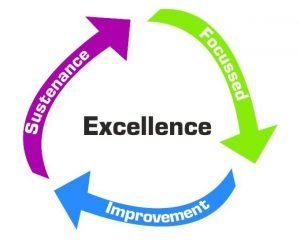In Lean thinking, consistency creates excellence.
That’s exactly what Standardized Work delivers — a structured approach that defines the best and safest way to perform a task, ensuring stability, quality, and efficiency across operations.

⚙️ What is Standardized Work?
Standardized Work is the process of documenting the current best practice for performing a job or process.
It ensures that every operator follows the same method, in the same sequence, using the same timing — resulting in predictable and repeatable outcomes.
It’s not about rigid control — it’s about creating a baseline for improvement.
🧩 Key Elements of Standardized Work
-
Takt Time:
The rate at which products must be produced to meet customer demand.
-
Work Sequence:
The exact order of steps an operator follows to complete the task.
-
Standard Work-In-Process (WIP):
The minimum amount of material needed to keep the process running smoothly.
Together, these elements create balance between people, process, and pace.
🚀 Benefits of Standardized Work
- Ensures consistent quality and safety
- Reduces variation and waste
- Simplifies training and cross-skilling
- Builds a foundation for continuous improvement (Kaizen)
- Makes problems visible quickly when deviations occur
🧭 Conclusion
Standardized Work is the backbone of Lean operations.
It’s not a one-time exercise, but a living system that evolves as teams find better ways to work. By stabilizing processes first, organizations create the foundation for innovation, improvement, and excellence.
“Without a standard, there can be no improvement.” – Taiichi Ohno






